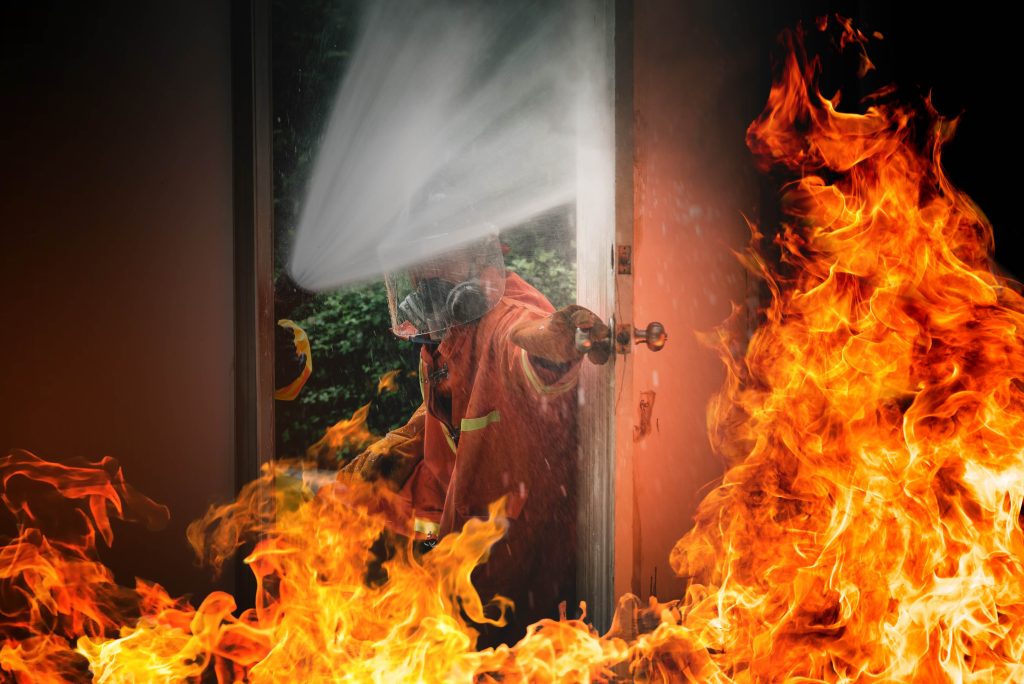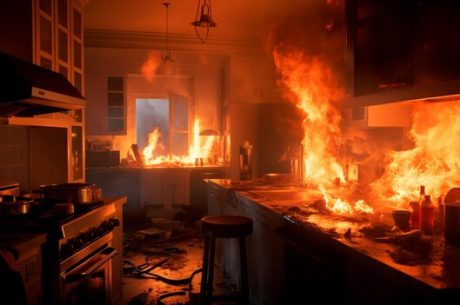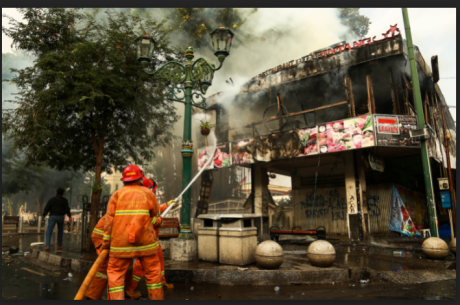In this blog post, we’ll explore practical strategies and essential tips for recovering from fire and smoke damage. From evaluating the scale of the damage to implementing restoration techniques, we will guide you through the recovery journey and help you regain your peace of mind.
Experiencing a fire can be a devastating event, leaving behind not only physical damage but also emotional distress. The aftermath of fire often involves dealing with the consequences of smoke damage, which can further complicate the recovery process. However, with the proper knowledge and proactive steps, recovering and restoring your home or property to its pre-fire condition is possible.
Assessing the Impact of Fire and Smoke Damage
Assessing the impact of fire and smoke damage is essential to ensure proper cleanup and restoration. The first step is a property damage assessment, which includes evaluating the structure for any physical damage caused by flames, heat, or smoke. It’s also essential to assess potential health risks from toxic materials that may have been released into the air during the fire.
Lastly, conducting an extensive smoke damage assessment is vital to determine what items can be salvaged from soot contamination and how much structural cleaning will occur. All this information must be gathered before initiating emergency cleanup and restoration efforts.
Emergency Cleanup and Restoration
Once the full extent of fire and smoke damage has been evaluated, it is time to begin emergency cleanup and restoration services. This process involves removing any water used to extinguish the fire and any charred debris that remains from the blaze. After the property has been cleared of damaged materials, removing lingering smoke odors and soot that can be hazardous if left unchecked is essential. Here are a few tips for successful post-fire cleanup:
- Contact Your Insurance Provider – Ensure you get in touch with your insurer immediately after experiencing fire or smoke damage. Your policy may finance some or all of the costs associated with repairs.
- Hire Experienced Professionals – Certified technicians have specialized knowledge of restoring properties affected by fires. They are equipped with state-of-the-art cleaning products and techniques designed to restore surfaces and contents to their pre-incident condition quickly and safely.
- Address Water Damage Promptly – If there is any flooding due to firefighters putting out the flames, ensure professional help is sought immediately to prevent further deterioration caused by moisture exposure.
It’s crucial for safety and preserving structural integrity that these steps are taken soon after a house fire occurs. In addition, smoke odors and soot can linger long after an incident, making addressing them essential for returning homes and businesses to normalcy. Professional restoration services provide practical solutions while eliminating chemical cleaners or inadequate equipment risks.
Removing Smoke Odors and Soot
Removing smoke odors and soot is crucial to recovering from fire and smoke damage. It’s important to enlist professional help for this task, as it can be quite involved. Smoke odor removal services specialize in removing the pungent odors left behind by fires. They use specialized techniques such as ozone treatments or thermal fogging to neutralize the smells completely. Soot cleanup professionals have the equipment and experience to properly clean surfaces without causing further harm.
It’s also essential to perform an odor remediation service after cleaning up any residual soot or smoke contaminants that might still linger in carpets and furniture fabrics. It will eliminate all offensive odors and won’t return when exposed to heat or moisture. Again, professional restoration companies should always be consulted for these tasks, as improper methods used by inexperienced individuals could cause permanent damage to your home or business property.
To move forward with proper recovery from fire and smoke damage, it’s time to address water damage caused by firefighting efforts. In addition, water extraction must take place quickly before mold growth begins, which can lead to even more complications down the road.
Dealing With Water Damage Caused by Firefighting Efforts

Water damage caused by firefighting efforts is one of the consequences of a fire emergency. Fire extinguishing requires large volumes of water, which can trigger flooding in your home or business and other kinds of damage to property and structures. Here are some procedures to help you address water damage after a fire:
- Remove Standing Water: Use pumps, wet vacuums, or buckets to remove any standing water from the affected area. The sooner you can extract the water, the better.
- Salvage Belongings: If possible, salvage any furniture, documents, or personal items affected by the water. Move them to a dry area to mitigate further damage and assess whether they can be restored or discarded.
- Dry Out the Area: Use air movers, dehumidifiers, and fans to facilitate drying. Open windows and doors to enhance ventilation if weather conditions permit. Pay attention to hidden areas, such as wall cavities and beneath floorboards, as they can retain moisture and lead to mold growth or structural issues.
- Clean Soot Residue: Fire damage often leaves soot and smoke residue on walls, ceilings, and other surfaces. Clean these areas using appropriate cleaning solutions and techniques. Consider wearing protective gear and consult with professionals for severe cases of soot damage.
- Inspect for Hidden Moisture: Use moisture meters or thermal imaging cameras to detect any hidden moisture that may have seeped into walls, flooring, or other concealed areas. If significant moisture is found, consider contacting a professional restoration company for thorough drying and potential mold remediation.
- Assess Structural Damage: Carefully inspect the property for any signs of warping, corrosion, or weakening of structural elements such as walls, ceilings, floors, and support beams. If significant damage is identified, consult a professional contractor or engineer to determine the necessary repairs or replacements.
Remember, taking immediate action to minimize water damage and promote effective restoration is crucial. However, if the damage is extensive, consider seeking assistance from professional water damage restoration companies to ensure a thorough and proper repair.
Repairing or Replacing Damaged Property and Structures
Now that the immediate water damage caused by firefighting efforts has been addressed, it’s time to start considering repairs and replacements for any property or structures damaged in the fire. The fire-damage repair can be a complex process if not done correctly, so hiring an experienced contractor who excels in this kind of work is essential to ensure proper restoration.
Smoke damage should also be addressed, as it can cause long-term problems if not properly removed. Structural repairs may be necessary, including replacing materials like drywall and insulation. Thorough professional attention is crucial to ensure the property returns to its pre-fire condition. Comprehensive inspections should be conducted before reoccupation.
Soot removal is vital to eliminate health risks, and specialized equipment should be used to clean away even small amounts of soot. After all repairs and replacements are done, and safety hazards are eliminated, thorough inspections should be conducted before reoccupying the premises. Long-term aftercare for the newly restored space should be prioritized following a fire disaster.
Long-Term Aftercare
Recovering from smoke and fire damage requires a comprehensive approach involving immediate restoration and long-term preventive measures. Of course, you should know what to do and not do after a house fire. Here are some long-term aftercare steps to consider:
- Fireproofing: Taking measures to fireproof your home or business can help prevent future losses. It can include using fire-resistant materials, installing fire doors, sealing gaps, and creating a defensible space around the property.
- Air Purification: Installing air purifiers with charcoal filters can help eliminate lingering odors from smoke and fire damage. These filters are effective in trapping and neutralizing smoke particles and odorous substances.
- Smoke Detectors: Installing smoke detectors throughout your property is crucial for detecting smoke or fire hazards early. Regularly test and maintain these detectors to ensure they are in proper working condition.
- Fire Safety Practices: Practice proper fire safety procedures regularly, such as checking electrical wiring for damage, storing combustible materials safely, and being cautious with open flames indoors. Educate yourself and others on fire safety protocols and develop an evacuation plan.
- Adequate Insurance Coverage: Sufficient fire insurance coverage is essential for financial protection against future fire-related losses. Review your insurance policy to ensure it adequately covers your property and possessions.
By implementing these long-term aftercare measures, you can minimize the risk of future smoke and fire damage and protect yourself, your family, or your business from potential disasters.
The Bottom Line
The aftermath of fire and smoke damage can be devastating, but with the right help and guidance, they don’t have to be a total loss. However, it is crucial to assess the full extent of the damage, take immediate action to mitigate any further destruction, and then begin cleaning up and restoring what has been affected.
Ultimately, recovering from fire and smoke damage requires patience, persistence, and professional help when necessary. With these measures taken into account, you can ensure that your home will return to its previous condition soon.
So if you’re in need of expert assistance to recover from fire and smoke damage, contact PuroClean Pembroke Pines today. Let us help you assess, mitigate, clean up, and restore your home, ensuring it returns to its previous condition in no time.




 PuroClean of Ft. Lauderdale South
PuroClean of Ft. Lauderdale South